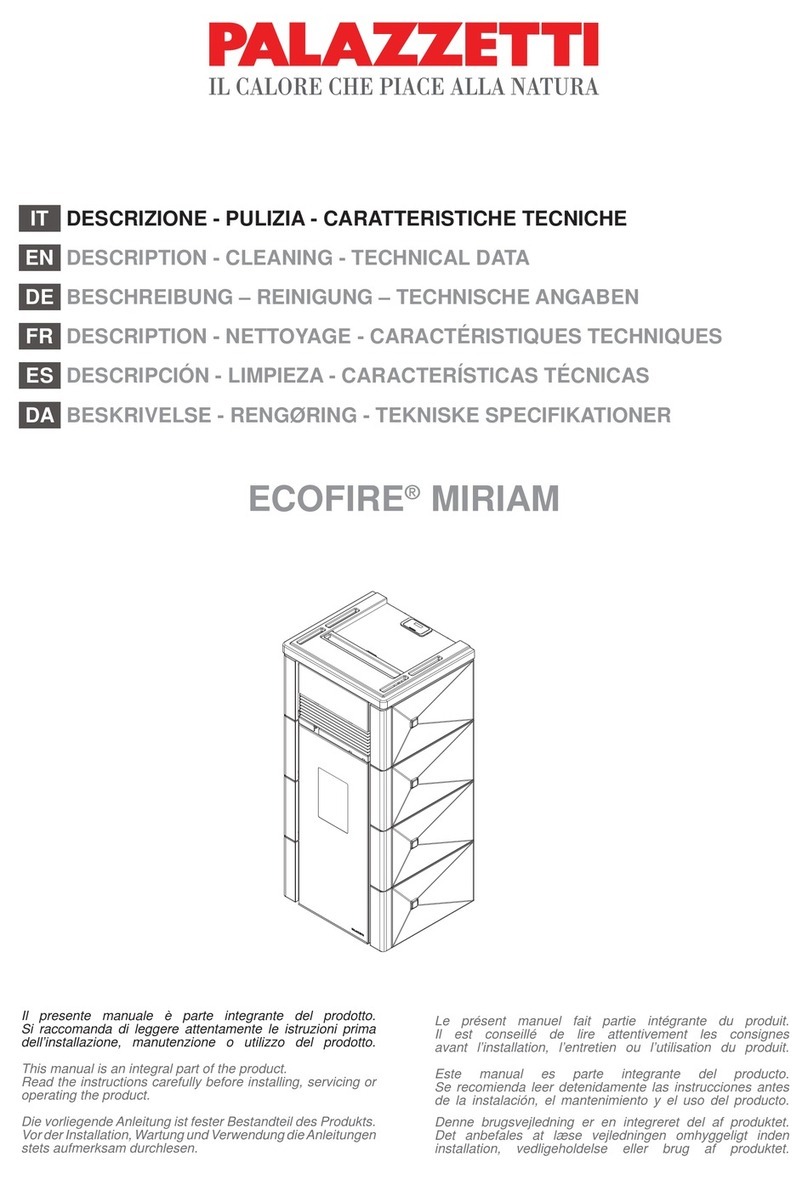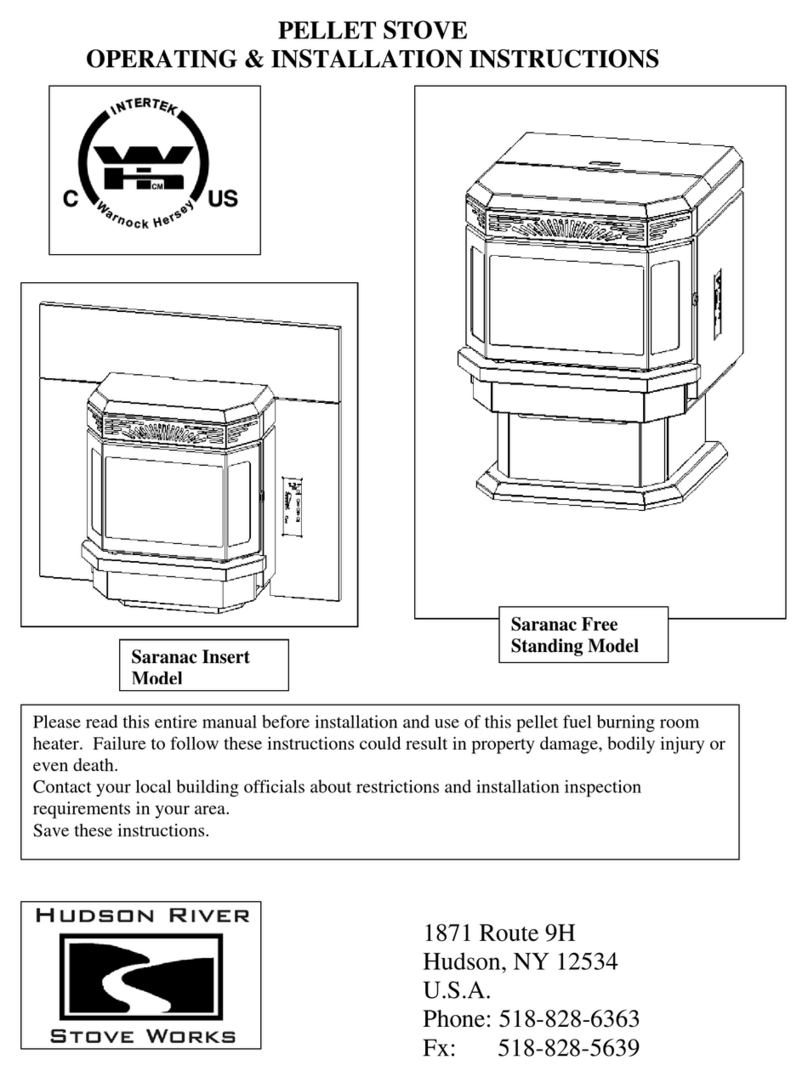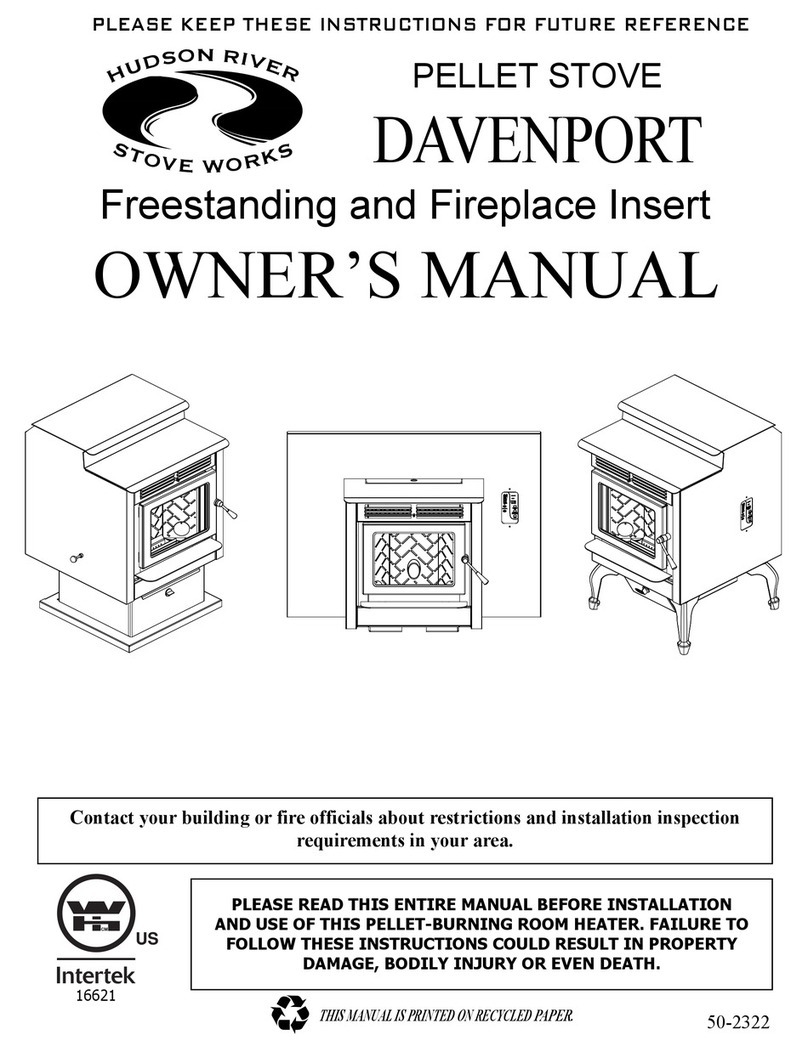5
Introduction
ASHES: Disposed ashes should be placed in a metal container with a tight fitting lid. The closed container
of ashes should be stored on a non-combustible floor, well away from all combustible materials pending
final disposal. If the ashes are disposed of by burial in soil or otherwise locally dispensed, they should be
retained in the closed container until all cinders have been thoroughly cooled.
ELECTRICAL: The use of a surge protected power bar is recommended. The unit must be
grounded. The grounded electrical cord should be connected to a standard 115 volts (3.3 Amps), 60
hertz electrical outlet. Be careful that the electrical cord is not trapped under the appliance and that it is
clear of any hot surfaces, sharp edges, and is accessible. If this power cord should become damaged, a
replacement power cord must be purchased from the manufacturer or a qualified HUDSON RIVER dealer.
This unit’s maximum power requirement is 400 watts.
GLASS: Do not abuse the glass by striking or slamming the door. Do not attempt to operate the stove
with broken glass. The stove uses ceramic glass. Replacement glass must be purchased from an HUDSON
RIVER dealer. Do not attempt to open the door and clean the glass while the unit is in operation or if
glass is hot. To clean the glass, use a soft cotton cloth and mild window cleaner, gas or wood stove glass
cleaner, or take a damp paper towel and dip into the fly ash. This is a very mild abrasive and will not
damage the glass.
FLAMMABLE LIQUIDS: Never use gasoline, gasoline-type lantern fuel, kerosene, charcoal lighter
the heater while it is in use.
SMOKE DETECTOR: Smoke detectors should be installed and maintained in the structure when
installing and operating a pellet burning appliance.
OPERATION: The ash pan, door, and hopper lid must be closed securely for proper and safe operation
of the pellet stove. Ensure all gaskets and seals are checked regularly and replaced when necessary.
KEEP ASH PAN FREE OF RAW FUEL.
DO NOT PLACE UNBURNED OR NEW PELLET FUEL IN THE ASH PAN. A FIRE IN THE ASH PAN MAY
OCCUR.
INSTALLATION: Be sure to maintain the structural integrity of your home when passing a vent through
walls, ceilings, or roofs. It is recommended that the unit be secured into its position in order to avoid any
displacement.
DO NOT INSTALL A FLUE DAMPER IN THE EXHAUST VENTING SYSTEM OF THIS UNIT.
DO NOT CONNECT THIS UNIT TO A CHIMNEY FLUE SERVING ANOTHER APPLIANCE.
FRESH AIR: Outside Fresh Air connection is optional BUT MUST be connected to all units installed in
devices when installing your unit and provide room air accordingly. Limited air for combustion may result
in poor performance, smoking and other side effects of poor combustion.
If you have any questions with regards to your stove or the above-mentioned information, please feel
free to contact your local dealer for further clarification and comments.
SINCE HUDSON RIVER STOVE WORKS HAS NO CONTROL OVER THE INSTALLATION OF
YOUR STOVE, HUDSON RIVER STOVE WORKS GRANTS NO WARRANTY IMPLIED OR STATED
FOR THE INSTALLATION OR MAINTENANCE OF YOUR STOVE. THEREFORE, HUDSON RIVER
STOVE WORKS ASSUMES NO RESPONSIBILITY FOR ANY CONSEQUENTIAL DAMAGE(S).
SAVE THIS INSTRUCTION MANUAL FOR FUTURE REFERENCE






























